Contents
Figures
Tables
Release History
1 Introduction
1.1 Scope
1.2 Purpose
2 Terminology
2.1 Use of Special Terms
2.2 Definitions
2.3 Abbreviations
2.4 Acronyms
3 References
4 C-PHY Overview
4.1 Summary of PHY Functionality
4.1.1 Summary of Lane Signaling States
4.1.2 Representation of Symbols in High-Speed Mode
4.1.3 Representation of High-Speed Signaling States
4.2 Mandatory Functionality
5 Architecture
5.1 Lane Modules
5.2 Master and Slave
5.3 High Frequency Clock Generation
5.4 Lanes and the PHY-Protocol Interface
5.5 Selectable Lane Options
5.6 Lane Module Types
5.6.1 Unidirectional Lane
5.6.2 Bi-Directional Lanes
5.6.2.1 Bi-Directional Lane Modes
5.6.2.2 Bi-Directional Lane with High-Speed Reverse Communication
5.7 Configurations
5.7.1 Unidirectional Configurations
5.7.1.1 PHY Configuration with a Single Lane
5.7.1.2 PHY Configuration with Multiple Lanes
5.7.1.3 Dual-Simplex (Two Directions with Unidirectional Lanes)
5.7.2 Bi-Directional Half-Duplex Configurations
5.7.2.1 PHY Configurations with a Bi-Directional Single Lane
5.7.2.2 PHY Configurations with Multiple Lanes
5.7.3 Mixed Lane Configurations
6 Global Operation
6.1 Transmission Data Structure
6.1.1 Data Units
6.1.2 Bit Order, Serialization, and De-Serialization
6.1.3 Encoding, Decoding, Mapping and De-Mapping
6.1.3.1 Wire States
6.1.3.2 Symbol Encoding and Decoding
6.1.3.2.1 Encoding
6.1.3.2.2 Decoding
6.1.3.3 16-to-7 Mapping and 7-to-16 De-Mapping Circuit Implementation
6.1.3.3.1 Tx 16-Bit to 7-Symbol Mapper
6.1.3.3.2 Rx 7-Symbol to 16-Bit De-Mapper
6.1.4 Data Buffering
6.2 Lane States and Line Levels
6.2.1 HS and LP Mode Line States and Line Levels
6.2.2 ALP Mode Line States and Line Levels
6.3 Operating Modes: Control, High-Speed, and Escape
6.3.1 HS and LP Operating Modes
6.3.2 ALP Operating Modes
6.4 High-Speed Data Transmission
6.4.1 Burst Payload Data
6.4.2 Start-of-Transmission
6.4.3 End-of-Transmission
6.4.4 HS Data Transmission Burst
6.4.4.1 Sync Word for Packet Header Resynchronization
6.4.4.2 Sync Word Sync Type
6.4.5 Alternate Low Power (ALP) Mode Transmission Burst
6.4.5.1 Stop Code and ULPS Code
6.4.5.2 Trigger Codes
6.4.5.3 Spacer Code
6.4.5.4 LPDT Start Code and LPDT Nibble Code
6.4.5.5 Post2 Code
6.4.5.6 ALP Timing Parameters
6.4.5.7 ALP Operation State Diagram
6.4.5.8 Concurrent LP and ALP Operation
6.5 Bi-Directional Lane Turnaround
6.6 Escape Mode
6.6.1 Remote Triggers
6.6.2 Low-Power Data Transmission
6.6.3 Ultra-Low Power State
6.6.4 Escape Mode State Machine
6.7 (Not Used)
6.8 (Not Used)
6.9 Global Operation Timing Parameters
6.10 System Power States
6.11 Initialization
6.11.1 LP Initialization
6.11.2 ALP Initialization
6.12 Calibration
6.12.1 Calibration Preamble Formats
6.12.1.1 Calibration Preamble Format 1
6.12.1.2 Calibration Preamble Format 2
6.12.1.3 Calibration Preamble Format 3
6.12.2 Calibration Operations
6.13 Global Operation Flow Diagram
6.14 Data Rate Dependent Parameters (Informative)
6.14.1 Parameters Containing Only UI Values
6.14.2 Parameters Containing Time and UI values
6.14.3 Parameters Containing Only Time Values
6.14.4 Parameters Containing Only Time Values That Are Not Data Rate Dependent
7 Fault Detection
7.1 Contention Detection
7.2 Sequence Error Detection
7.2.1 SoT Error
7.2.2 SoT Sync Error
7.2.3 EoT Sync Error
7.2.4 Escape Mode Entry Command Error
7.2.5 LP Transmission Sync Error
7.2.6 False Control Error
7.3 Protocol Watchdog Timers (Informative)
7.3.1 HS RX Timeout
7.3.2 HS TX Timeout
7.3.3 Escape Mode Timeout
7.3.4 Escape Mode Silence Timeout
7.3.5 Turnaround Errors
8 Interconnect and Lane Configuration
8.1 Lane Configuration
8.2 Boundary Conditions
8.3 Definitions
8.4 S-Parameter Specifications
8.5 Characterization Conditions
8.6 Interconnect Specifications
8.6.1 Differential Characteristics
8.6.1.1 Differential Insertion Loss
8.6.1.2 Differential Reflection Loss
8.6.2 Common-Mode Characteristics
8.6.3 Intra-Lane Cross-Coupling
8.6.4 Mode-Conversion Limits
8.6.5 Inter-Lane Static Skew
8.7 Driver and Receiver Characteristics
8.7.1 Differential Characteristics
8.7.2 Common-Mode Characteristics
8.7.3 Mode-Conversion Limits
9 Electrical Characteristics
9.1 Driver Characteristics
9.1.1 High-Speed Transmitter
9.1.1.1 Tx HS Unterminated Mode
9.1.1.2 Advanced Tx Equalization (TxEQ Option)
9.1.1.3 Tx ALP-Pause and ALP-Pause Wake
9.1.2 Low-Power Transmitter
9.2 Receiver Characteristics
9.2.1 High-Speed Receiver
9.2.1.1 Rx HS Unterminated Mode
9.2.1.2 Rx ALP-Pause and ALP-Pause Wake
9.2.2 Low-Power Receiver
9.3 Line Contention Detection
9.4 Input Characteristics
10 High-Speed Signal Timing
10.1 High-Speed UI Timing
10.2 High-Speed Data Eye Pattern and Transmission Timing
10.2.1 UI Jitter
10.2.2 Sources of Data Jitter and Recovered Clock Jitter
10.3 Timing Specifications
10.3.1 Tx Timing Specifications
10.3.2 Rx Timing Specifications
10.3.3 Channel Rate Guidance as a Function of Interconnect and Feature Set
10.4 Reverse High-Speed Data Transmission Timing
11 Regulatory Requirements
12 Built-In Test Circuitry (Informative)
12.1 Introduction
12.2 Register Concept
12.2.1 Allocation of Register Addresses
12.2.2 Example of Register Access via CCI
12.2.3 Register Definitions
12.3 Tx Lane Test Circuitry
12.3.1 TLRn_Lane_Configuration
12.3.2 TLRn_Test_Patterns_Select
12.3.3 TLRn_PRBS_Seed_0
12.3.4 TLRn_PRBS_Seed_1
12.3.5 TLRn_PRBS_Seed_2
12.3.6 Tx Lane PRBS Register Operation
12.4 Rx Lane Test Circuitry
12.4.1 RLRn_Lane_Configuration
12.4.2 RLRn_Test_Pattern_Select
12.4.3 RLRn_Rx_Lane_Status
12.4.4 RLRn_PRBS_Seed_0
12.4.5 RLRn_PRBS_Seed_1
12.4.6 RLRn_PRBS_Seed_2
12.4.7 Rx Lane PRBS Register Operation
12.4.8 Rx Lane Word Error Count and Word Count Functionality
12.4.9 RLRn_Word_Error_Count
12.4.10 RLRn_Word_Count_0
12.4.11 RLRn_Word_Count_1
12.4.12 RLRn_Word_Count_2
12.4.13 RLRn_Word_Count_3
12.4.14 RLRn_Word_Count_4
12.4.15 RLRn_Word_Count_5
12.4.16 Symbol Error Count and Symbol Error Location Functionality
12.4.17 RLRn_Sym_Error_Count
12.4.18 RLRn_1st_Sym_Err_Loc_0
12.4.19 RLRn_1st_Sym_Err_Loc_1
12.4.20 RLRn_1st_Sym_Err_Loc_2
12.4.21 RLRn_1st_Sym_Err_Loc_3
12.4.22 RLRn_1st_Sym_Err_Loc_4
12.4.23 RLRn_1st_Sym_Err_Loc_5
12.5 Tx Global Configuration and Status Registers
12.5.1 TGR_Global_Configuration
12.5.2 Burst Enable/Disable Functionality
12.5.3 TGR_Preamble_Length
12.5.4 TGR_Post_Length
12.5.5 TGR_Preamble_Prog_Sequence_0,1
12.5.6 TGR_Preamble_Prog_Sequence_2,3
12.5.7 TGR_Preamble_Prog_Sequence_4,5
12.5.8 TGR_Preamble_Prog_Sequence_6,7
12.5.9 TGR_Preamble_Prog_Sequence_8,9
12.5.10 TGR_Preamble_Prog_Sequence_10,11
12.5.11 TGR_Preamble_Prog_Sequence_12,13
12.6 Rx Global Configuration and Status Registers
Annex A Logical PHY-Protocol Interface Description(Informative)
A.1 Signal Description
A.2 High-Speed Transmission from the Master or Slave
A.3 High-Speed Reception at the Slave or Master
A.4 High-Speed Transmission from the Slave
A.5 High-Speed Reception at the Master
A.6 Low-Power Data Transmission
A.7 Low-Power Data Reception
A.8 Turn-Around
A.9 (Not Used)
A.10 Optical Link Support
A.10.1 System Setup
A.10.2 Serializer and De-Serializer Block Diagrams
A.10.3 Timing Constraints
A.10.4 System Constraints
A.10.4.1 Bus Turnaround
A.10.4.2 Equalization and Calibration
A.10.4.3 tWAIT-OPTICAL
Annex B Interconnect Design Guidelines (Informative)
B.1 Practical Distances
B.2 RF Frequency Bands: Interference
B.2.1 Specific Recommendations Regarding EMI and EMC
B.3 Transmission Line Design
B.4 Reference Layer
B.5 Printed-Circuit Board
B.6 Flex Circuits
B.7 Series Resistance
B.8 Connectors
Annex C Implementation Guidelines (Informative)
C.1 Guidance Regarding High-Speed Mode Options
C.2 Receiver Pairwise Common Mode Level Guidance
C.2.1 Pairwise Common Mode without AC Common Mode Noise
C.2.2 Pairwise Common Mode with Low Frequency AC Common Mode Noise
C.2.3 Pairwise Common Mode with High Frequency AC Common Mode Noise
Participants


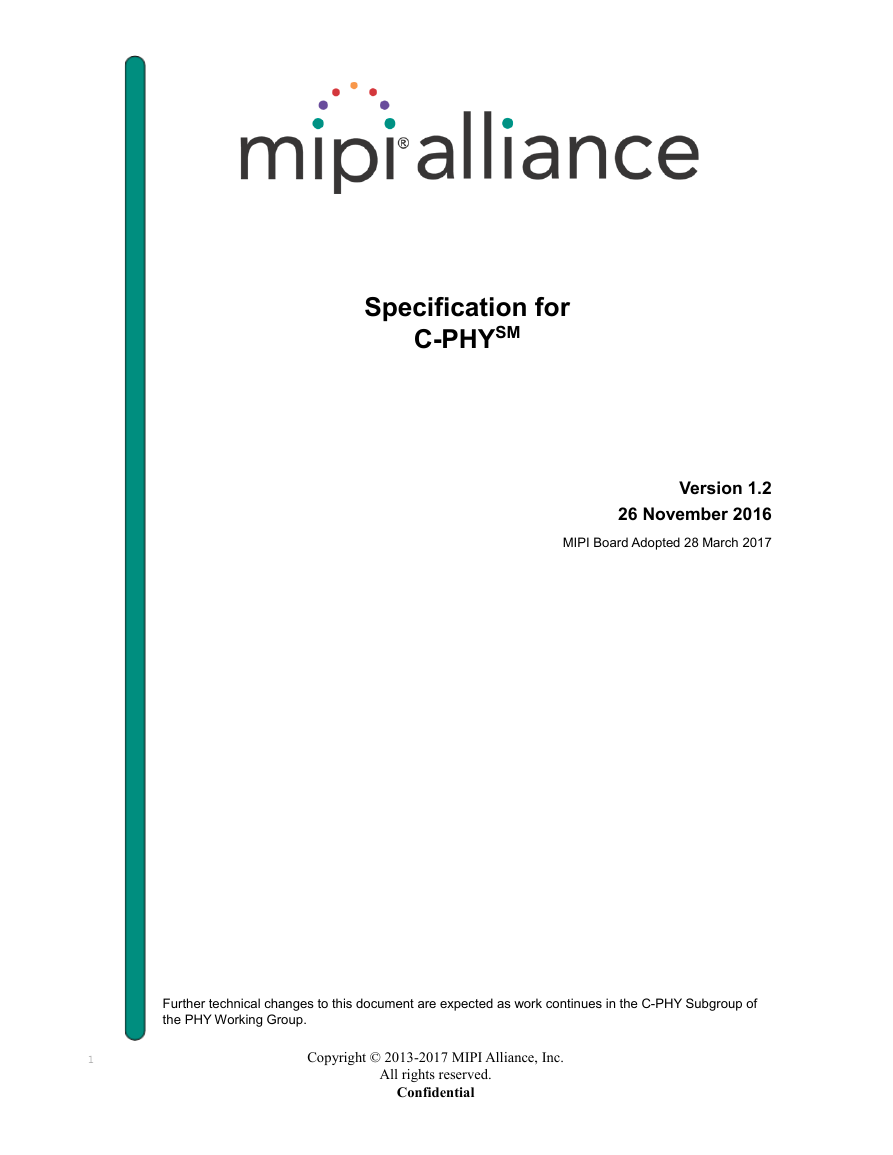
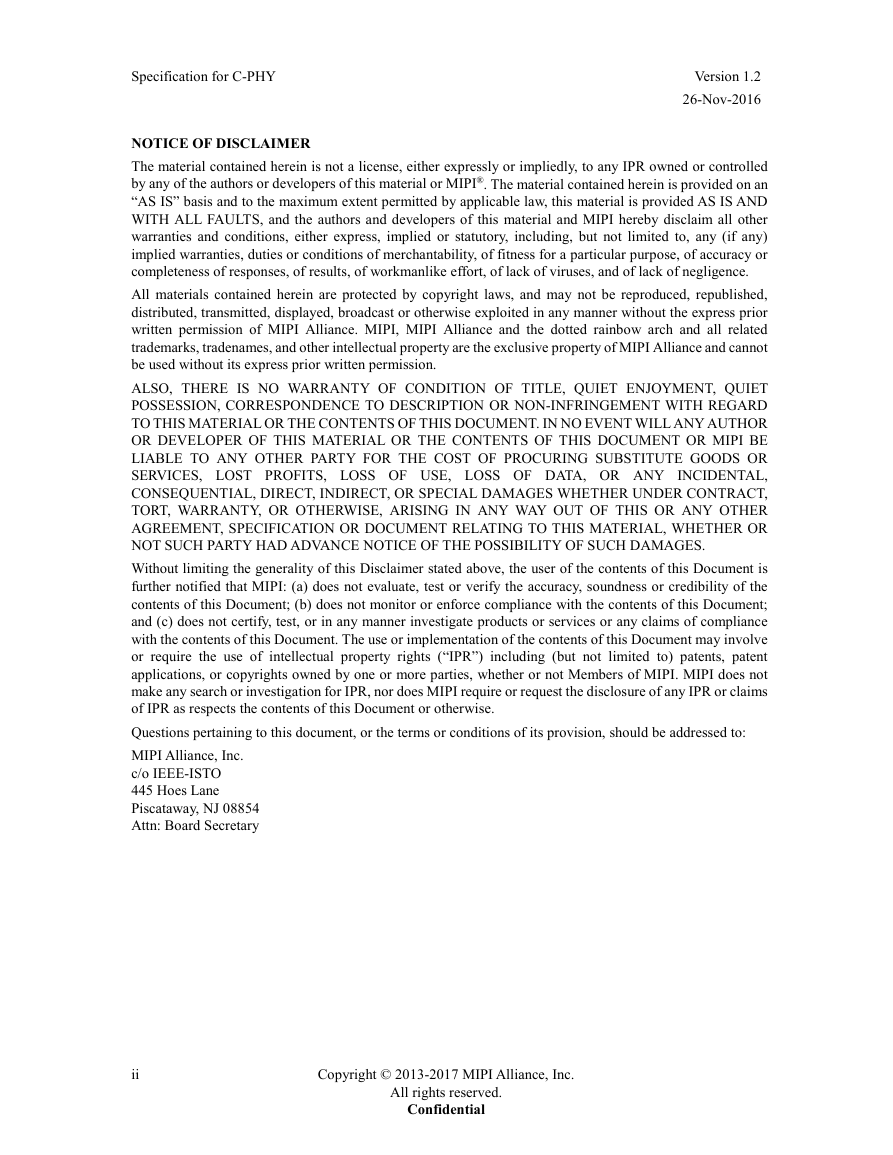
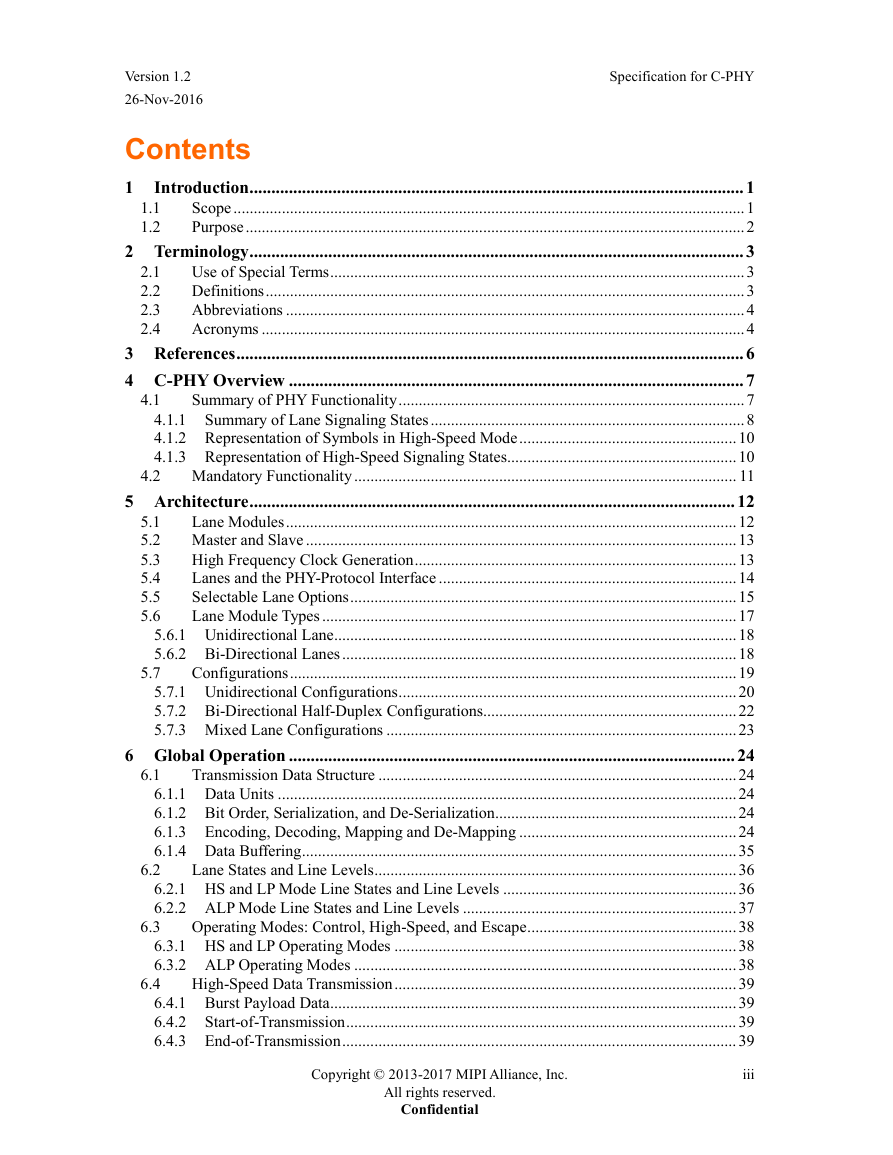
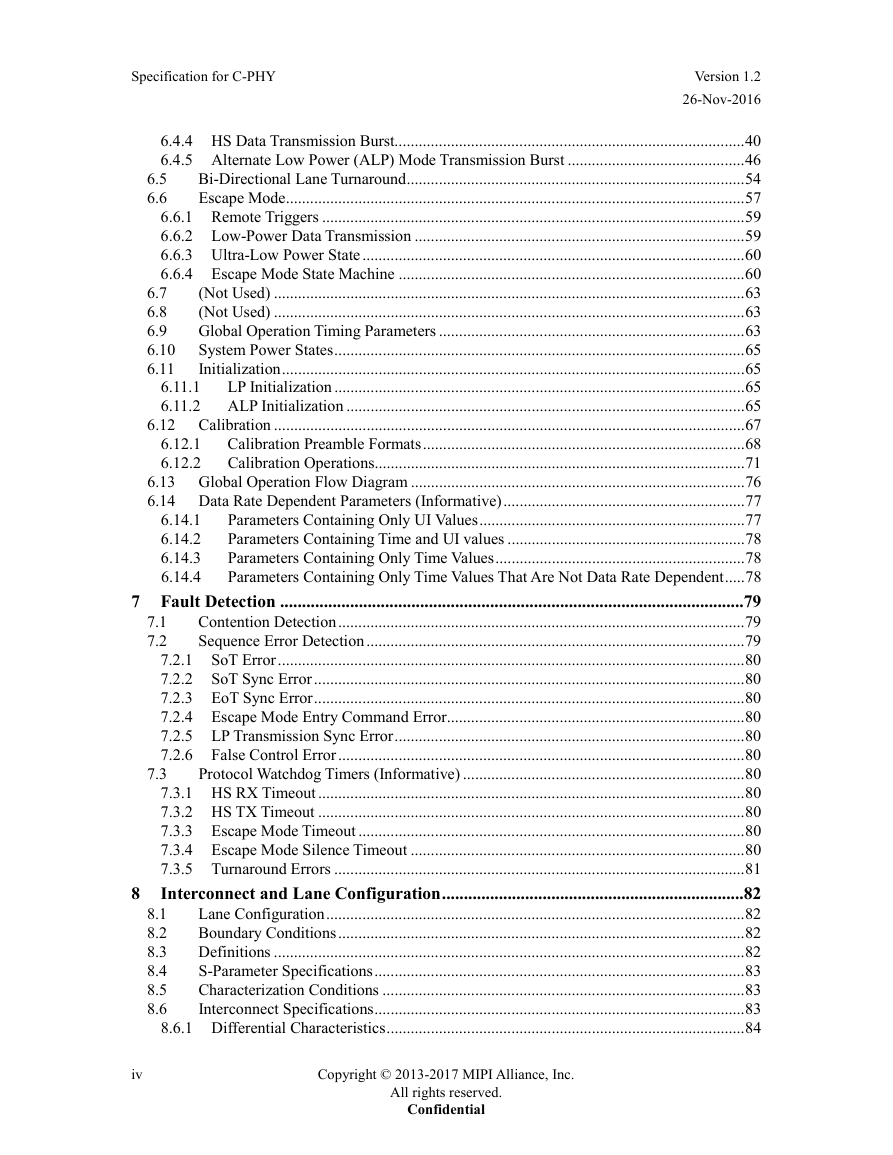
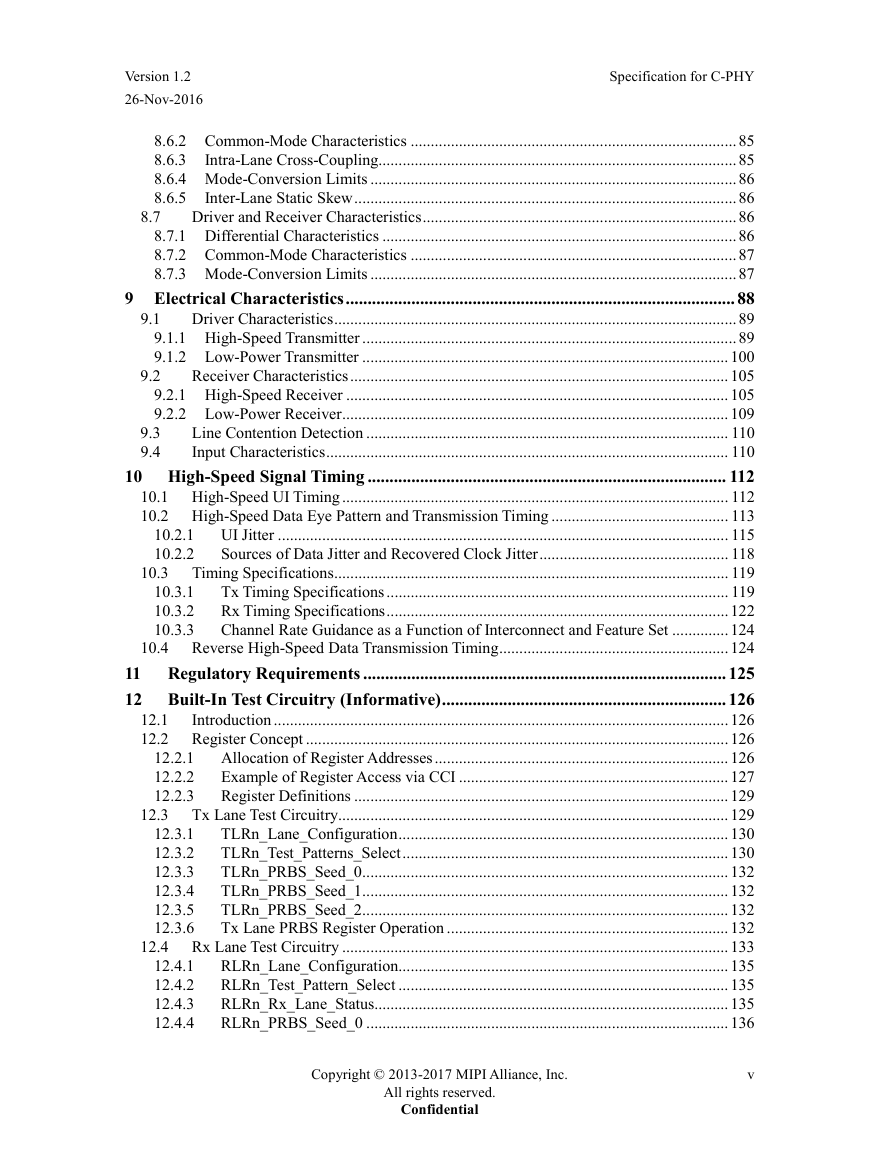









 2023年江西萍乡中考道德与法治真题及答案.doc
2023年江西萍乡中考道德与法治真题及答案.doc 2012年重庆南川中考生物真题及答案.doc
2012年重庆南川中考生物真题及答案.doc 2013年江西师范大学地理学综合及文艺理论基础考研真题.doc
2013年江西师范大学地理学综合及文艺理论基础考研真题.doc 2020年四川甘孜小升初语文真题及答案I卷.doc
2020年四川甘孜小升初语文真题及答案I卷.doc 2020年注册岩土工程师专业基础考试真题及答案.doc
2020年注册岩土工程师专业基础考试真题及答案.doc 2023-2024学年福建省厦门市九年级上学期数学月考试题及答案.doc
2023-2024学年福建省厦门市九年级上学期数学月考试题及答案.doc 2021-2022学年辽宁省沈阳市大东区九年级上学期语文期末试题及答案.doc
2021-2022学年辽宁省沈阳市大东区九年级上学期语文期末试题及答案.doc 2022-2023学年北京东城区初三第一学期物理期末试卷及答案.doc
2022-2023学年北京东城区初三第一学期物理期末试卷及答案.doc 2018上半年江西教师资格初中地理学科知识与教学能力真题及答案.doc
2018上半年江西教师资格初中地理学科知识与教学能力真题及答案.doc 2012年河北国家公务员申论考试真题及答案-省级.doc
2012年河北国家公务员申论考试真题及答案-省级.doc 2020-2021学年江苏省扬州市江都区邵樊片九年级上学期数学第一次质量检测试题及答案.doc
2020-2021学年江苏省扬州市江都区邵樊片九年级上学期数学第一次质量检测试题及答案.doc 2022下半年黑龙江教师资格证中学综合素质真题及答案.doc
2022下半年黑龙江教师资格证中学综合素质真题及答案.doc